Episode 33: Listener Question: How Do I Peak My Horses Performance for a Show?
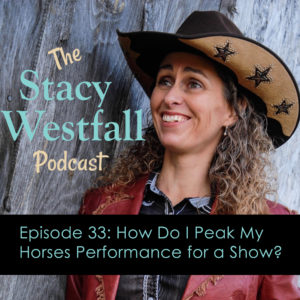
Subscribe For Free!
In this episode, I’m answering a listener question about peaking a horse for a show. The question is how do you keep your horse from peaking before you go to the show? The listener is a week away from a cowboy obstacle racing show. She exercised her mare yesterday, and the mare felt great. She doesn’t want to overtrain her horse if the horse is at its peak.
To answer this question, I ask some questions about getting the horse to this peak. Since I’m not on the phone with the listener, I’m going to run through some different scenarios about these questions that will hopefully help her gain clarity. Also, if anyone is interested in recording a Q and A phone conversation with me, let me know. That could be a really fun podcast.
“It's very possible to get a horse balanced in a state where you have a level way of being across the board.” Stacy Westfall Click To Tweet
Show Notes:
[02:10] How did you get your horse to this peak? How long did it take? Have you had her at a peak like this before? How long did that peak last? What do you think brought her down from that last peak?
[03:05] Keep in mind as I run through these scenarios, we are trying to bring the horse into the zone, but it’s kind of like that teeter-totter we’ve talked about previously.
[03:42] How did you get her to this peak? If a horse is going to peak quickly and then fall off the other side I need an awareness that it’s happening.
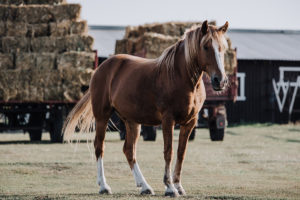
[05:17] With a very responsive horse you need to realize what the breaking point is and where they start to tip over the edge. You might want to peak this horse right before the show. You should also study how to extend this peak.
[07:24] You should be trying to figure this out at home when you don’t have a show.
[08:17] With a really relaxed horse, you want to start to sharpen them a week before the start of the show. With a horse like this ask how long did the last peak last?
[10:13] Why doesn’t the balance last? At the lower levels a steady state of balance is achievable. It’s very possible to get a horse balanced in a state where you have a level way of being across the board.

[10:53] When you start taking horses to a higher level, you have to start thinking about getting into the zone. When you’re operating at a very high level, you are asking for a very high level of mental sharpness which can cause a certain amount of stress.
[12:03] As the zone moves higher, it’s a different conversation than the balanced teeter-totter.
[12:27] Think about how much you are taking the horse out of its comfort zone, and its ability level.
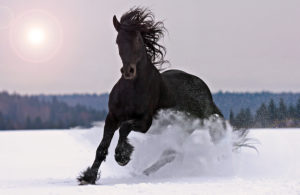
[13:09] Horses who have to max out physically are pushing the edge of mental.
[14:15] I love showing because it brings up my awareness about this subject. These things happen everywhere where you work with your horse.
[14:44] It’s important to remember when you work a horse at a high level, you are bringing a certain amount of stress, so it’s important to also bring the horse down from that level of stress.
“When you're operating at a very high level, you are asking for a very high level of mental sharpness which can cause a certain amount of stress.” Stacy Westfall Click To Tweet
Links and Resources:
WestfallHorsemanship@gmail.com
Have you ever wondered what a live version of this podcast would be like?I’m hosting some live, online video calls that are like a live version of this podcast. I teach on a subject, answer questions and for those who are brave, I’ll turn your video on live too and you can join me for a conversation!
If you want to learn more about this you can visit https://stacywestfall.com/live/ for more information!
SUBSCRIBE TO THE PODCAST HERE:
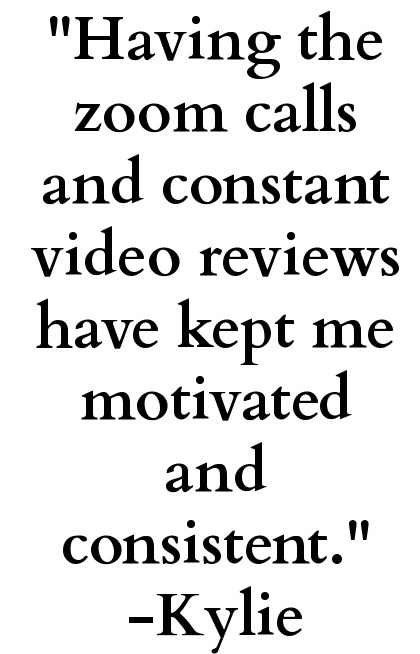
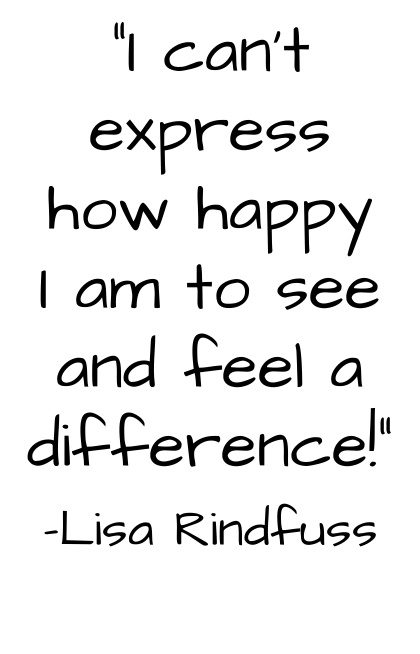
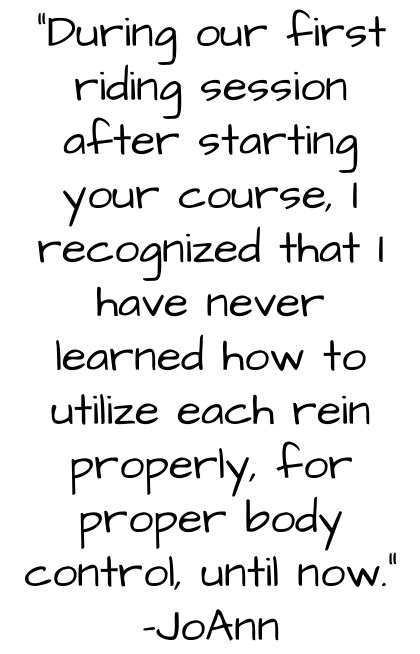

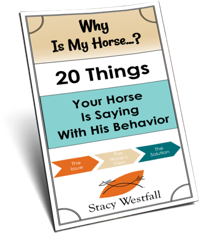
YOURS FREE
WHY IS MY HORSE...?



